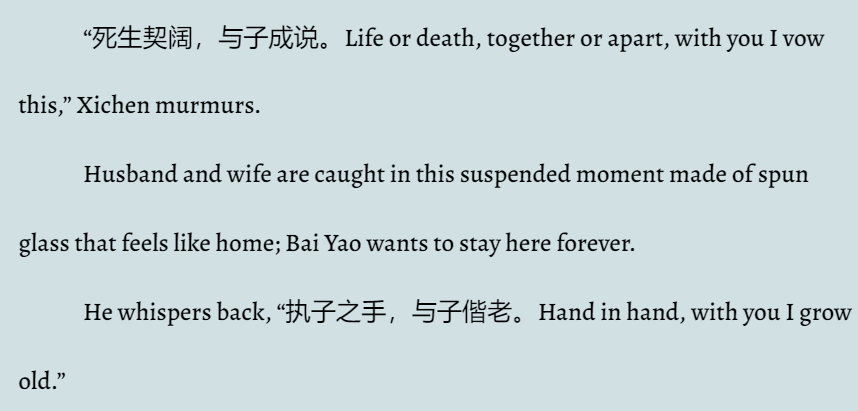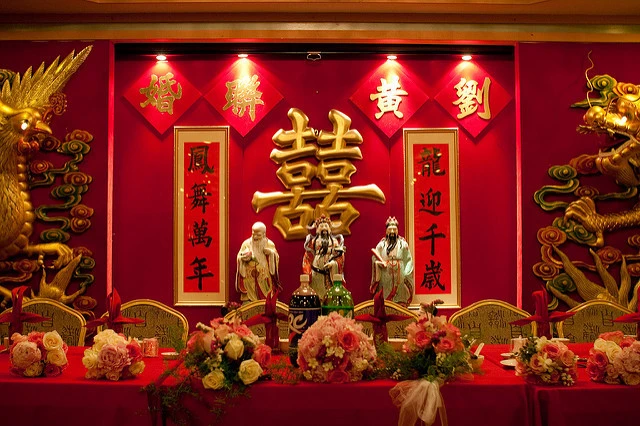Chapter 6: 双喜 | NUPTIALS + Chapter 7: 红线 | WEDDED
Chinese cultural meta + director& #39;s commentary: WEDDING EDITION! https://abs.twimg.com/emoji/v2/... draggable="false" alt="🥂" title="Anstoßende Gläser" aria-label="Emoji: Anstoßende Gläser"> https://twitter.com/vivisextion/status/1371957021772292102">https://twitter.com/vivisexti...
https://abs.twimg.com/emoji/v2/... draggable="false" alt="🥂" title="Anstoßende Gläser" aria-label="Emoji: Anstoßende Gläser"> https://twitter.com/vivisextion/status/1371957021772292102">https://twitter.com/vivisexti...
Chinese cultural meta + director& #39;s commentary: WEDDING EDITION!
There are many many traditions that go into a Chinese wedding, which can make writing one of them (modern or canonverse) kind of intimidating! Also tricky, since it& #39;s usually m/m relationships we write. Hopefully this will help if you ever need to write one.
嫁 JIA AND 娶 QU
Depending on who is marrying in or out, different terms are used. 嫁 jia is usually referring to the bride (女), who leaves her family to marry into her husband& #39;s (家). 娶 qu is usually referring to the groom, who gains (娶) a wife (女).
Depending on who is marrying in or out, different terms are used. 嫁 jia is usually referring to the bride (女), who leaves her family to marry into her husband& #39;s (家). 娶 qu is usually referring to the groom, who gains (娶) a wife (女).
It is quite heteronormative as it& #39;s olden China (and even today but less so). Here I have just assigned bride-groom/husband-wife not to gender, but to whoever is marrying in or not. Hence in this case A-Yao will be the bride and Xichen the groom.
I do not assign genders to these terms in this story or meta - they are simply titles, and don& #39;t reflect the character& #39;s gender or gender expression - they& #39;re still them. It is just to denote their places in this familial structure, not ascribing to heterenormativity here.
HAIR COMBING RITUAL
This hair combing ritual (梳头 aka 上头) takes place on the eve of the wedding, and signifies that the bride and groom are coming of age and ready to be married. Usually, it is done in their respective homes (not allowed to see each other before wedding).
This hair combing ritual (梳头 aka 上头) takes place on the eve of the wedding, and signifies that the bride and groom are coming of age and ready to be married. Usually, it is done in their respective homes (not allowed to see each other before wedding).
A married female relative (such as the bride/groom& #39;s mother, or other relative, even friends) will perform the ritual. Some rules stipulate this person has to be happily married with children who are surviving.
There are whole kits of objects prepared for this ritual! These involve things which symbolise luck (lotus seeds + rulers = abundance of offspring).
A pair of red dragon-phoenix candles and joss sticks are lit before starting.
A pair of red dragon-phoenix candles and joss sticks are lit before starting.
As mentioned in the previous meta thread, dragon (husband) - phoenix (bride) are symbols of matrimonial harmony. https://twitter.com/vivisextion/status/1370545752255107075?s=20">https://twitter.com/vivisexti...
During the ceremony, one should be wearing new red sleep clothes, sit at a table facing an open window, ideally with the moon visible (so that 月老 Yue Lao (& #39;old man under the moon& #39;), the god of marriage, can watch).
He is the deity in charge of linking couples destined to be together with the 姻缘红线 red thread of fate/marriage, hence why chapter 7 is called 红线 hóngxiàn. https://en.wikipedia.org/wiki/Yue_Lao ">https://en.wikipedia.org/wiki/Yue_...
Then, the female relative will recite the blessings. In some versions, there are 10 blessings, but most people use the first 4. In the story, A-Yao doesn& #39;t have an older female relative, or anyone for that matter, so Huaisang does it for him.
The candles/joss must finish burning before the bride or groom goes to sleep, and they won& #39;t see each other until the next day.
Some rituals have much more detail and can vary based on dialect/ethnicity group (like the groom starting the ritual before the bride, bathing in pomelo leaves to cleanse evil, eating tangyuan after) etc. But these are the basics.
THE OUTFITS
Lots of colours are used other than the traditional red, like green and black, but it& #39;s the main colour! I decided to add a white outer robe for the Lans, similar to Jiang Yanli& #39;s wedding outfit in CQL.
Lots of colours are used other than the traditional red, like green and black, but it& #39;s the main colour! I decided to add a white outer robe for the Lans, similar to Jiang Yanli& #39;s wedding outfit in CQL.
A-Yao is also wearing a phoenix crown 凤冠 fèngguān which was a traditional headpiece for brides (but also used in other contexts).
https://thevintagenews.com/2016/12/23/fengguan-a-masterpiece-of-traditional-chinese-jewelry/">https://thevintagenews.com/2016/12/2...
https://thevintagenews.com/2016/12/23/fengguan-a-masterpiece-of-traditional-chinese-jewelry/">https://thevintagenews.com/2016/12/2...
Since I love makeup, I had to include some rouge paper. In olden times, lip rouge came in paper sheets, that you would press your lips on. It happens in many c-dramas in pre-wedding preparations, so it& #39;s just stuck with me.
Picture from: http://chinadaily.com.cn/life/2009-06/18/content_11798369.htm">https://chinadaily.com.cn/life/2009...
Picture from: http://chinadaily.com.cn/life/2009-06/18/content_11798369.htm">https://chinadaily.com.cn/life/2009...
Would highly recommend this tumblr to look at wedding hanfu from different dynasties:
https://ziseviolet.tumblr.com/post/111588896292/various-styles-of-traditional-chinese-wedding
Also,">https://ziseviolet.tumblr.com/post/1115... to see a big variety of accessories and robes here in c-dramas: https://www.youtube.com/watch?v=G2x15nnzvYg">https://www.youtube.com/watch...
https://ziseviolet.tumblr.com/post/111588896292/various-styles-of-traditional-chinese-wedding
Also,">https://ziseviolet.tumblr.com/post/1115... to see a big variety of accessories and robes here in c-dramas: https://www.youtube.com/watch?v=G2x15nnzvYg">https://www.youtube.com/watch...
THE BIG DAY
The two families + fortune tellers will pick an auspicious day and hour for the ceremony, often dependent on the bride/groom& #39;s 八字 bā zì | birth characters. Arranged matches were made based on the couple& #39;s bā zì. This would determine if the marriage was a success.
The two families + fortune tellers will pick an auspicious day and hour for the ceremony, often dependent on the bride/groom& #39;s 八字 bā zì | birth characters. Arranged matches were made based on the couple& #39;s bā zì. This would determine if the marriage was a success.
On the day itself, the bride will get ready in her home, then be covered in the traditional red veil (盖头 gài tóu). This veil won& #39;t be removed until the groom does so in their nuptial chamber.
The groom goes to pick the bride up at her home, usually with a sedan/palanquin in the olden days and a wedding procession with loud instruments (aka 亲迎 qīnyíng). Nowadays we just go by car.
In more modern times, you& #39;ll also get what is now known as & #39;gatecrashing& #39;, where the bride& #39;s family will make the groom pass certain & #39;tests& #39; (I& #39;ve heard of things like eating wasabi) and giving red packets of money.
Since A-Yao doesn& #39;t exactly have a house (unless you count the bottom of the lake), I just had him in Cloud Recesses. Since his husband& #39;s family is big and influential, it should be okay XD (e.g. if your husband is the emperor he won& #39;t be doing the procession, for example).
THE THREE BOWS
This is known as 拜堂 bàitáng. After this, the bride is officially part of the husband& #39;s family.
一拜天地 First bow to heaven and earth: to pay respect to the deities. This is done by bowing or kowtowing in the direction of the main door.
This is known as 拜堂 bàitáng. After this, the bride is officially part of the husband& #39;s family.
一拜天地 First bow to heaven and earth: to pay respect to the deities. This is done by bowing or kowtowing in the direction of the main door.
二拜高堂 Second bow to parents: lit. 高堂 = high altar. to show filial piety, thanking your parents for raising you. The groom& #39;s parents sit on either side of the altar.
夫妻对拜 Husband and wife exchange bows: to show respect to each other. They face each other and then bow. Sometimes if the husband is higher ranking, the wife will bow first.
TEA CEREMONY
Now that the wife is part of the husband& #39;s family, they will address the husband& #39;s relatives as their own (hence why A-Yao calls LQR same as Xichen ie. Shufu). The couple kneels to offer their relatives tea and greet them by title.
Now that the wife is part of the husband& #39;s family, they will address the husband& #39;s relatives as their own (hence why A-Yao calls LQR same as Xichen ie. Shufu). The couple kneels to offer their relatives tea and greet them by title.
There is an order of who gets offered tea - first the parents of the groom, then grandparents, and then the rest of the extended family by seniority. With big families this can take hours! This is still done today. After each relative is served they often give red packets.
NUPTIAL CHAMBER
After the ceremony, the couple enters the 洞房 dòng fáng. No time wasted! This is where the groom will finally unveil his bride! Everything is in red.
[Replica of Emperor Kangxi& #39;s nuptial chamber at the Palace of Earthly Tranquility within the Forbidden City]
After the ceremony, the couple enters the 洞房 dòng fáng. No time wasted! This is where the groom will finally unveil his bride! Everything is in red.
[Replica of Emperor Kangxi& #39;s nuptial chamber at the Palace of Earthly Tranquility within the Forbidden City]
This is also where they may do the romantic linking arms and drinking wine (交杯酒 jiāo bēi jiǔ) Aka 合卺 hé jǐn = to share a nuptial cup. 酒 is a homophone (jiǔ) for 久 so it also symbolises longevity of the marriage.
In some dynasties, the ceremony can also include symbolic hand washing (沃盥 wò guàn). The couple may also cut off a lock of each other& #39;s hair to tie together as well. They may eat meat from the same plate/animal too (同牢 tóng láo). You might see these in other c-dramas.
喜宴 xǐ yàn | 喜酒 xǐ jiǔ: the husband& #39;s family will throw the wedding banquet for the guests, to announce the union to the public. Often symbolic foods are served (eg. fish 鱼 for 余 abundance, lotus seeds 莲子 lián zǐ for 连子 offspring).
The bride& #39;s family is not involved much with the wedding day, as it is the bride who is marrying into the husband& #39;s family. However, on the third day of the marriage, the bride would return to their family home and have their party then.
You can see an example of a Han wedding here:
https://youtu.be/jZ__zkd-Bvc
Some">https://youtu.be/jZ__zkd-B... good sources (but doesn& #39;t cover everything in here + covers other stuff):
https://www.travelchinaguide.com/intro/social_customs/marriage/
https://www.travelchinaguide.com/intro/soc... href=" http://chcp.org/virtual-museum-library/chinese-wedding-traditions/
Again,">https://chcp.org/virtual-m... these will vary with dynasty and region.
https://youtu.be/jZ__zkd-Bvc
Some">https://youtu.be/jZ__zkd-B... good sources (but doesn& #39;t cover everything in here + covers other stuff):
https://www.travelchinaguide.com/intro/social_customs/marriage/
Again,">https://chcp.org/virtual-m... these will vary with dynasty and region.
HUSBAND AND WIFE TERMS
There are lots of terms in ancient times for & #39;wife/husband& #39;, depending on the dynasty. Here are the more common ones you& #39;ll hear in c-dramas. Some of these are what you address your spouse(address), or what others refer to your spouse as (title).
There are lots of terms in ancient times for & #39;wife/husband& #39;, depending on the dynasty. Here are the more common ones you& #39;ll hear in c-dramas. Some of these are what you address your spouse(address), or what others refer to your spouse as (title).
娘子 niáng zi: The one used by Xichen. A term you call your wife. Very common in c-dramas. Usually quite affectionate.
Can also mean & #39;madam& #39; in some periods if used with the surname e.g. in Madam White Snake Bai Suzhen is referred to as 白娘子 Bai-niangzi.
Can also mean & #39;madam& #39; in some periods if used with the surname e.g. in Madam White Snake Bai Suzhen is referred to as 白娘子 Bai-niangzi.
妻子 qī zi: More of a term others would use e.g. "That is his wife 那是他的妻子". To use it as a term of endearment, you might see 爱妻 ài qī (beloved wife), though it can be used to describe someone else& #39;s wife too.
夫人 fū ren: The one most seen in CQL/MDZS. It& #39;s along the lines of Madam or Mrs and used in conjunction with a surname when addressed by others e.g. Yu-furen. You can call your own wife furen too though (usually older couples, it& #39;s cute).
Depending on situation, some can take the husband& #39;s surname if his family is influential, like Jin-furen, or like Yu-furen, can keep their own surname.
老婆 lǎo pó: more of a colloquial term but very cute/affectionate, you& #39;d address your wife with it.
http://xh.5156edu.com/page/z7220m8545j19568.html">https://xh.5156edu.com/page/z722...
老婆 lǎo pó: more of a colloquial term but very cute/affectionate, you& #39;d address your wife with it.
http://xh.5156edu.com/page/z7220m8545j19568.html">https://xh.5156edu.com/page/z722...
Now for the husbands!
夫君 fū jūn: Probably most common in c-dramas, it& #39;s what most people refer to their husbands with, often quite respectful/affectionate.
老公 lǎo gōng: the counterpart to 老婆 lǎo pó. Can be very affectionate also. Very effective for 撒娇 sā jiāo.
夫君 fū jūn: Probably most common in c-dramas, it& #39;s what most people refer to their husbands with, often quite respectful/affectionate.
老公 lǎo gōng: the counterpart to 老婆 lǎo pó. Can be very affectionate also. Very effective for 撒娇 sā jiāo.
相公 xiàng gong: What A-Yao calls Xichen. This term has a complicated history! At one point it was used for scholars/officials, then just noble young masters (like 公子 gōng zǐ), usually with their surname (e.g. Xu Xian in MWS is called Xu-xianggong).
Then it was & #39;husband who were officials/scholars& #39; during certain periods, then husbands, and even later male sex workers during the Qing dynasty.
Depends on context of course. The wife will call the husband just 相公 xiàng gong, counterpart to 娘子 niáng zi.
Depends on context of course. The wife will call the husband just 相公 xiàng gong, counterpart to 娘子 niáng zi.
官人 guān rén: similar to 相公 xiàng gong, at first used to describe officials (官), then used to refer to one& #39;s husband who was an official, then husbands.
http://xh.5156edu.com/page/z1124m9374j19567.html">https://xh.5156edu.com/page/z112...
http://xh.5156edu.com/page/z1124m9374j19567.html">https://xh.5156edu.com/page/z112...
THE WEDDING VOWS
The wedding vows at the end of chapter 7 are from the 诗经 Shī Jīng | Classic of Poetry. This poem 击鼓 Ji Gu is from the 邶风 Bei Feng section, thought to be from the Zhou dynasty.
https://baike.baidu.com/item/%E6%89%A7%E5%AD%90%E4%B9%8B%E6%89%8B%EF%BC%8C%E4%B8%8E%E5%AD%90%E5%81%95%E8%80%81/75654">https://baike.baidu.com/item/%E6%...
The wedding vows at the end of chapter 7 are from the 诗经 Shī Jīng | Classic of Poetry. This poem 击鼓 Ji Gu is from the 邶风 Bei Feng section, thought to be from the Zhou dynasty.
https://baike.baidu.com/item/%E6%89%A7%E5%AD%90%E4%B9%8B%E6%89%8B%EF%BC%8C%E4%B8%8E%E5%AD%90%E5%81%95%E8%80%81/75654">https://baike.baidu.com/item/%E6%...
It was used to mean brothers-in-arms on the battlefield, but later was used in a romantic context to describe everlasting love.
死生契阔,与子成说: No matter in life (生) or death (死), separated (阔) or together (契), I have already made this commitment/sworn this oath to you.
死生契阔,与子成说: No matter in life (生) or death (死), separated (阔) or together (契), I have already made this commitment/sworn this oath to you.
子 here doesn& #39;t mean & #39;son& #39;, but means & #39;you& #39;. In classical Chinese many words take on different means to regular Chinese, which makes it tricky to decipher esp. without context @_@
执子之手,与子偕老: Holding (执) your (子) hand (手), with you (子) I grow old (偕老)
偕老 xié lǎo as in 白头偕老 bái tóu xié lǎo - to live together until white-haired and old, often used to mean conjugal bliss/longevity, hence why these lines are used in a marriage context.
偕老 xié lǎo as in 白头偕老 bái tóu xié lǎo - to live together until white-haired and old, often used to mean conjugal bliss/longevity, hence why these lines are used in a marriage context.
There& #39;s many other rituals I didn& #39;t cover in the story like the three letters and six etiquettes 三书六礼 sān shū liù lǐ, which covers all the formal communications between bride and groom families.
This is when the groom’s family to formally propose the union with the bride’s family and betrothal gifts are sent.
However, if I were to put in everything, it would cover a whole book instead of two chapters! Instead, I tried to retain the most relevant and recognisable ones.
However, if I were to put in everything, it would cover a whole book instead of two chapters! Instead, I tried to retain the most relevant and recognisable ones.
THE END! That was EXTREMELY long I know. But I hope that shows you how complicated Chinese weddings are! I barely scratched the surface here. Hopefully, if you ever want to write one, this will help. Make sure what you& #39;re using it specific to ancient vs modern Chinese culture!
Chapters this meta appears in: https://twitter.com/vivisextion/status/1371957021772292102?s=20">https://twitter.com/vivisexti...
https://twitter.com/vivisextion/status/1373371301461688320?s=20">https://twitter.com/vivisexti...
Tumblr version: https://vivisextion.tumblr.com/post/646302492156674048/%E8%84%B1%E8%83%8E%E6%8D%A2%E9%AA%A8-mortal-flesh-serpent-bones-vivisextion">https://vivisextion.tumblr.com/post/6463...
From the top: https://twitter.com/vivisextion/status/1373686640946913290?s=20">https://twitter.com/vivisexti...

 Read on Twitter
Read on Twitter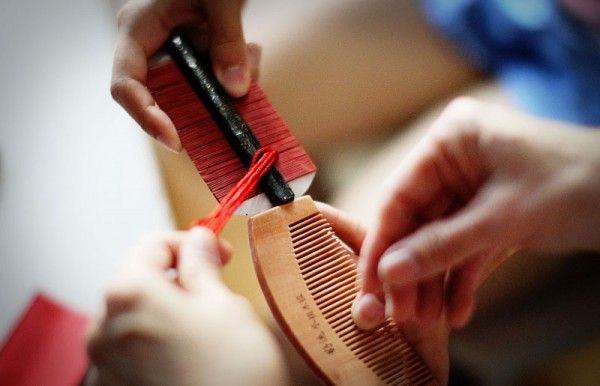
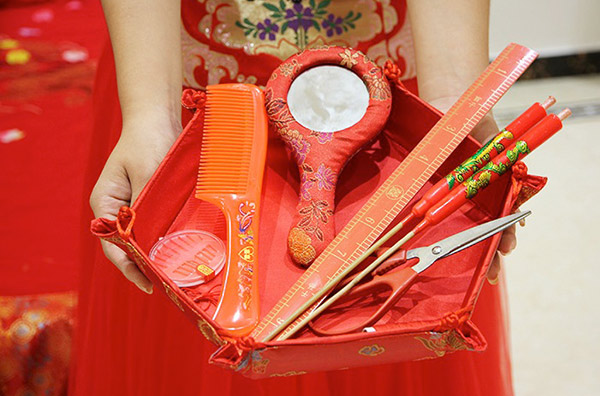
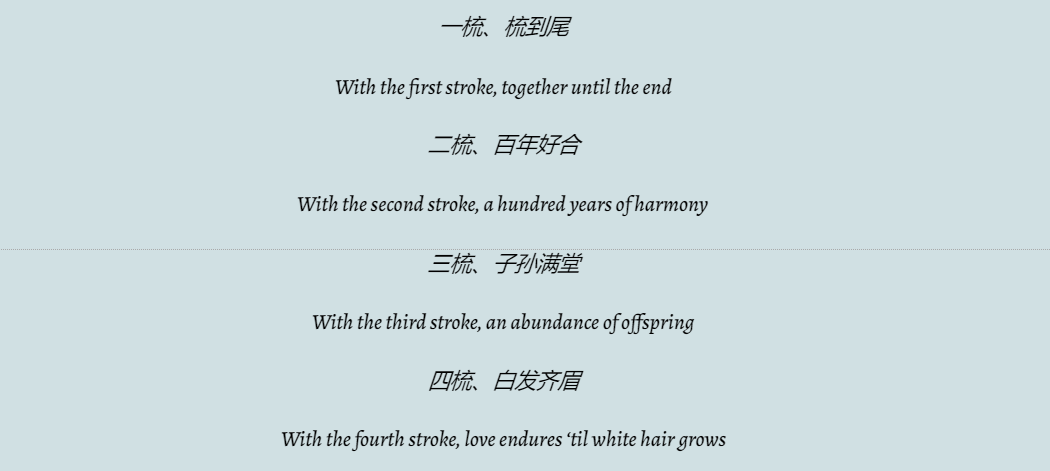


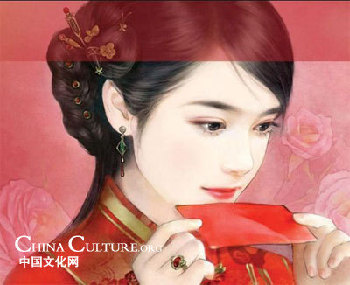

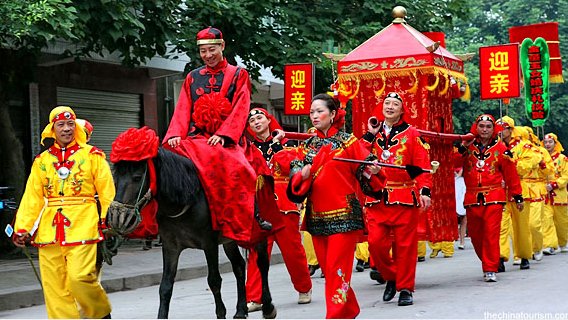
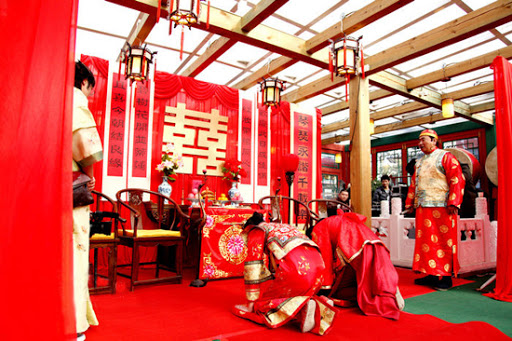



![NUPTIAL CHAMBERAfter the ceremony, the couple enters the 洞房 dòng fáng. No time wasted! This is where the groom will finally unveil his bride! Everything is in red.[Replica of Emperor Kangxi& #39;s nuptial chamber at the Palace of Earthly Tranquility within the Forbidden City] NUPTIAL CHAMBERAfter the ceremony, the couple enters the 洞房 dòng fáng. No time wasted! This is where the groom will finally unveil his bride! Everything is in red.[Replica of Emperor Kangxi& #39;s nuptial chamber at the Palace of Earthly Tranquility within the Forbidden City]](https://pbs.twimg.com/media/ExB6UoDWYAYW3Mx.png)

